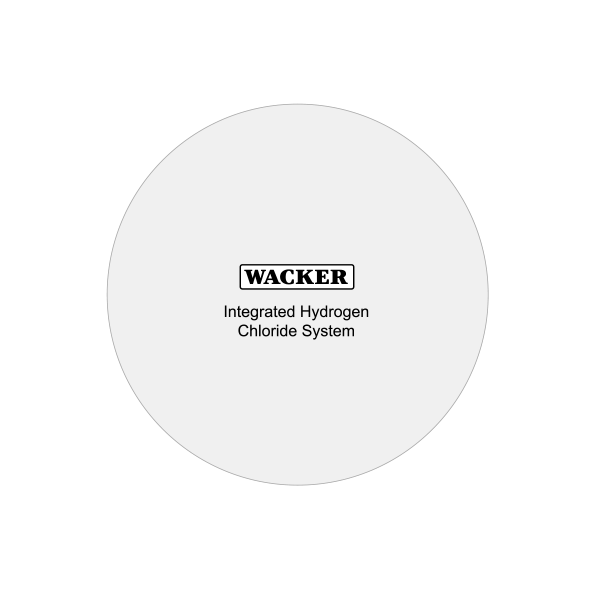Integrated Production – Our Greatest Strength
A key advantage for WACKER is the highly integrated material loops at its major production sites in Burghausen, Nünchritz, Charleston and Zhangjiagang. Basically, integrated production involves using the side-stream products from one stage as starting materials for making other products. The auxiliaries required for this, such as silanes, are recycled in a closed loop. Waste heat from one process is utilized in other chemical processes. In other words, our integrated-production system reduces our consumption of energy and resources, using raw materials sustainably.
We are constantly working to optimize our integrated-production system. We also analyze and test ways of extending the circular economy so that we can feed materials from suppliers, customers and end consumers into this loop along with our own WACKER materials.
Our integrated production system encompasses the following:
- Integrated energy solutions in which waste heat generated in production is used in downstream chemical processes. Examples here include generating steam from waste heat and preheating feed water for the production of deionized water.
- Integrated material systems in which byproducts generated in a given process are treated and fed back into the production loop or they serve as raw materials for other processes. Examples here include our integrated hydrogen chloride, silicon, and acetic acid production systems.
Our integrated production system is primarily based on salt, silicon, methanol, acetic acid and ethylene as starting materials. In integrated processes, we optimize material efficiency by purifying byproducts and reusing them or making them available for external use.
- In our integrated ethylene production system, we use ethylene to obtain organic intermediates, which we then turn into polymer dispersions and dispersible polymer powders.
- Our integrated silicon production system operates along similar lines. Although comprising only a small number of raw materials – silicon, methanol and salt (sodium chloride) – this system enables us to manufacture over 2,800 different silicone products, as well as pyrogenic silica and polysilicon.
A focus of our integrated production is to minimize hydrogen chloride (HCl) consumption. HCl is an essential auxiliary deployed in the production of reactive intermediates from energy-poor natural materials. We then use these intermediates to make our end products. Hydrogen chloride production requires a lot of energy. In our integrated material loop, we recover both hydrogen chloride and some of the energy in the form of heating steam during the conversion of the chlorine-containing intermediates to chlorine-free end products (such as silicones, hyperpure silicon or pyrogenic silica). We then return the recovered hydrogen chloride to the production loop and reuse it. This closed material loop reduces emissions and, due to lower raw-material consumption, shipment journeys.
Integrated Hydrogen Chloride System
We use a chloralkali membrane process to supply chlorine, hydrogen, caustic soda and hydrogen chloride as starting materials to our Burghausen site. Example of savings potential for resources through our integrated production system:
- We recycle 93 to 96 percent of the hydrogen chloride that we use in the production loops at our Burghausen and Nünchritz sites. During the reporting period, we again worked on closing our material loops as much as possible and reducing the loss rate by means of optimization projects.
More information can be found in our fact sheet: Integrated Production

